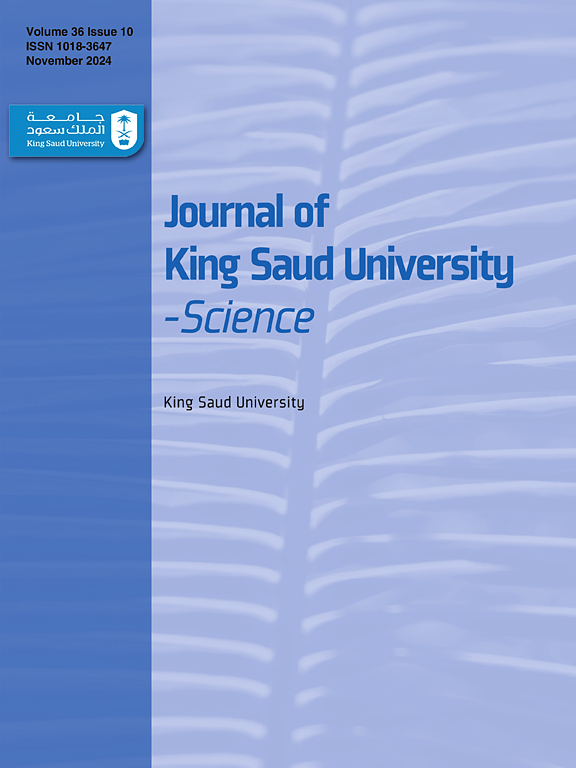Nano-based herbal Mahkota Dewa (Phaleria macrocarpa) for pre-eclampsia: A histological study on placental and blood changes
IF 3.6
3区 综合性期刊
Q1 MULTIDISCIPLINARY SCIENCES
引用次数: 0
Abstract
Background
Phaleria macrocarpa, a medicinal plant native to Indonesia, can potentially manage oxidative stress and inflammation—key factors in pre-eclampsia. This study investigates its efficacy as a complementary therapy for pre-eclampsia.
Materials and Methods
Sixty Wistar rats (30 male, 30 females; 120–180 g) were housed at Universitas Sumatera Utara. After a two-week acclimatization, confirmed pregnant female rats were divided into six groups: C- (normal), C+ (pre-eclampsia, untreated), C1 (Nifedipine 10 mg/kg BW), T1 (Mahkota Dewa 180 mg/kg BW), T2 (360 mg/kg BW), and T3 (720 mg/kg BW). Treatment groups received daily injections of Prednisone (1.5 mg/kg BW) and 6 % NaCl for 14 days. Pre-eclampsia was confirmed with blood pressure readings of 140/90 mmHg. Blood samples were analyzed for superoxide dismutase (SOD), malondialdehyde (MDA), VEGF, and sFlt-1. Placental samples were assessed for caspase-3, −8, and −10 expression using immunohistochemistry.
Results
The nano-herbal formulation significantly reduced oxidative stress (lower MDA, higher SOD), restored angiogenic balance (lower sFlt-1, higher VEGF), and decreased apoptosis markers (caspase-3, −8, −10).
Conclusion
Nano-herbal Mahkota Dewa shows promise as a therapeutic option for pre-eclampsia. It effectively reduces oxidative stress, improves angiogenic balance, and provides protection against placental apoptosis.
纳米草药大戟草治疗先兆子痫:胎盘和血液变化的组织学研究
背景:原产于印度尼西亚的药用植物大樱草可以潜在地控制氧化应激和炎症关键因素在子痫前期。本研究探讨其作为子痫前期补充治疗的疗效。材料与方法Wistar大鼠60只,雄性30只,雌性30只;120-180克)被安置在苏门答腊北方大学。经2周适应后,将确认怀孕的雌性大鼠分为6组:C-组(正常)、C+组(子痫前期,未经治疗)、C1组(硝苯地平10 mg/kg BW)、T1组(麻花180 mg/kg BW)、T2组(360 mg/kg BW)、T3组(720 mg/kg BW)。治疗组每日注射强的松(1.5 mg/kg BW)和6% NaCl,连续14 d。先兆子痫的血压读数为140/90 mmHg。分析血液样本超氧化物歧化酶(SOD)、丙二醛(MDA)、VEGF和sFlt-1。应用免疫组织化学方法检测胎盘样品中caspase-3、- 8和- 10的表达。结果纳米草药配方显著降低氧化应激(降低MDA,升高SOD),恢复血管生成平衡(降低sFlt-1,升高VEGF),降低凋亡标志物(caspase-3,−8,−10)。结论纳米草药马科他是治疗先兆子痫的理想选择。它有效地减少氧化应激,改善血管生成平衡,并提供保护,防止胎盘凋亡。
本文章由计算机程序翻译,如有差异,请以英文原文为准。
求助全文
约1分钟内获得全文
求助全文
来源期刊

Journal of King Saud University - Science
Multidisciplinary-Multidisciplinary
CiteScore
7.20
自引率
2.60%
发文量
642
审稿时长
49 days
期刊介绍:
Journal of King Saud University – Science is an official refereed publication of King Saud University and the publishing services is provided by Elsevier. It publishes peer-reviewed research articles in the fields of physics, astronomy, mathematics, statistics, chemistry, biochemistry, earth sciences, life and environmental sciences on the basis of scientific originality and interdisciplinary interest. It is devoted primarily to research papers but short communications, reviews and book reviews are also included. The editorial board and associated editors, composed of prominent scientists from around the world, are representative of the disciplines covered by the journal.
 求助内容:
求助内容: 应助结果提醒方式:
应助结果提醒方式:


